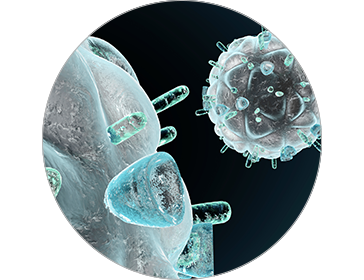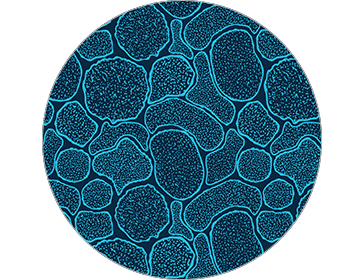Infectious Diseases and Vaccines
Infectious diseases continue to have a devastating impact on public health despite improvements in healthcare. Increasing human mobility1, population growth2 and climate change3 have further contributed to its spread. We understand that infectious diseases can have long-lasting consequences for vulnerable populations.
Therefore, at Janssen, we are leveraging our strong foundations in science and technology to develop medicines and vaccines that can prevent, treat and, ultimately, cure some of the world’s deadliest infectious diseases, such ashuman immunodeficiency virus(HIV) and tuberculosis (TB).
HIV

HIV remains one of the greatest global health challenges of our time. It is estimated that around 38 million4 people are living with HIV globally. In Hong Kong, an estimated 10,2805 people are HIV-positive. Today, those diagnosed with HIV who receive treatment early have a near-normal life expectancy. While we have made significant progress in our fight against HIV, there is still much more we can do.
At Janssen, we continue to build on our 25-year commitment to end HIV through education, prevention, detection and treatment, so that one day we can help to Make HIV History.
Find out more about Our Commitment to Make HIV History
Tuberculosis

Despite being preventable and curable, TB is the world’s deadliest infectious disease, killing 1.5 million6 people every year – more than HIV/AIDS and malaria combined. Underserved communities bear the largest burden, with more than 95% of TB-related deaths occurring in low- and middle-income countries, but this airborne disease knows no borders.
In Hong Kong, TB is one of the major infectious diseases posing a threat to human health. According to the Department of Health7 Tuberculosis and Chest Service, there are around 4,000 to 5,0008 reported cases of TB each year. In 2019, the total number of TB cases was 4,051. For every 100,000 people, 53.8 are living with TB. Although this figure is lower today than in the 1950s and 60s, it is high compared with other developed economies. At Janssen, our mission is to ‘enable a world without TB’.
Find out more about TB:
References
- Findlater A and Bogoch II. Human mobility and the global spread of infectious diseases: A focus on air travel. Trends Parasitol 2018; 34(9):772-783.
- Garnett GP and Lewis JJC. The impact of population growth on the epidemiology and evolution of infectious diseases. In: Caraël M., Glynn J.R. (eds) HIV, Resurgent Infections and Population Change in Africa. International Studies in Population, vol 6. Springer, Dordrecht; 2007:27-40.
- Xu X, et al. Impact of climate change on human infectious diseases: Empirical evidence and human adaptation. Environ Int 2016; 86:14-23.
- UNAIDS. Global HIV & AIDS statistics — 2020 fact sheet. Accessed November 26, 2020. https://web.archive.org/web/20201121144954/https://www.unaids.org/en/resources/fact-sheet.
- Centre for Health Protection. HIV/AIDS Situation in Hong Kong [2019]. April 2020. Accessed November 26, 2020. https://web.archive.org/web/20201126093255/https://www.chp.gov.hk/files/pdf/hiv_fc2019e.pdf.
- World Health Organization. Tuberculosis. Accessed November 26, 2020. https://web.archive.org/web/20201120081123/https://www.who.int/health-topics/tuberculosis#tab=tab_1.
- Department of Health. Tuberculosis and Chest Service. Updated March 22, 2007. Accessed November 26, 2020. https://web.archive.org/web/20191107043138/https://www.dh.gov.hk/english/main/main_chp/tuber.html.
- Centre for Health Protection. Notification & death rate of tuberculosis (all forms), 1947-2019. Updated August 11, 2020. Accessed November 26, 2020. https://web.archive.org/web/20191110063003/https://www.chp.gov.hk/en/statistics/data/10/26/43/88.html.
